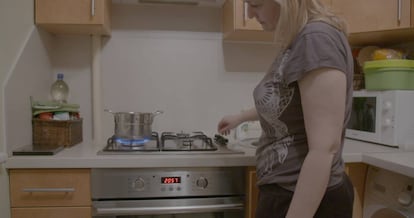Free gas market key to energy security in the Baltic States
Of the three Baltic States; Estonia, Latvia and Lithuania, Latvia remains the last one to liberalise its natural gas market in 2017
Free and fully functional natural gas market is essential in ensuring high level of energy security in the Baltic States. Of the three Baltic States —Estonia, Latvia and Lithuania— Latvia remains the last one to liberalise its natural gas market in 2017 and open possibility for establishing a common Baltic gas market area. While all natural gas that Latvia consumes still comes from Russia, the Klaipeda LNG terminal provides a good alternative to pipeline supplies from Russia.

The three Baltic States together consume just under six billion cubic metres of natural gas annually. It is a small gas market that needs competition and liquidity for all stakeholders to get the best out of it. Solid legislative framework, transparent rules, level playing field for all market participants as well as an independent transmission system operator (TSO) is key to ensuring the gas market works to the benefit of consumers. Latvian gas TSO was unbundled at the very end of December 2016. Legal opening of gas market in Latvia is set for April 3th 2017, with a few elements of the regulatory framework for the functioning of the free gas market still going through the final stages of approval by the national energy regulator.
Considering high reliance on natural gas for energy production, gas infrastructure is the backbone of energy security and a precondition for effective functioning of gas market in the Baltic States. Latvia has well developed natural gas transmission system and so does Lithuania and Estonia. Region’s only natural gas storage facility is situated in Latvia —the capacity of the Inčukalns underground gas storage facility (UGSF) allows storing up to three months of the Baltic gas consumption in winter and just under two years of Latvian consumption alone. Lithuania bore the costs of building currently the only alternative gas supply route to the Baltic States— with the Klaipeda LNG terminal in Lithuania having started commercial operation at the end of 2015, gas supplies to Lithuania have been coming in also from Norway’s gas producer Statoil providing a good leverage for Lithuanian consumers when negotiating prices with Russia’s Gazprom, which is still the biggest gas supplier to the region. Consumers in Latvia are looking forward eagerly at the opportunities that will come with gas market liberalisation.
Success of free gas market and improved energy independence depends on how smoothly the three countries can cooperate in the energy sector. Although clamped together on a comparatively small territory and often perceived as one, the three countries represent three different situations in terms of their energy portfolios. The role of natural gas in the three neighbouring countries differs significantly with Lithuania being the most dependent and Estonia being the least dependent on this valuable energy resource.
Russia’s Gazprom is still the biggest gas supplier to the region
After the closure of the Ignalina nuclear power plant in 2009 natural gas became a significant primary energy resource for energy production in Lithuania turning it from one of the most energy independent EU member states into one of the most dependent ones. Lithuania imports roughly 60% of electricity while about 70% of domestic production is from natural gas. The rest is hydro and renewables.
Latvia depends on natural gas to a lesser extent than Lithuania, but still approximately one third of electricity is produced from natural gas and one third by three large hydro power plants. The rest is imported mainly from the neighbouring Estonia. This proportion varies depending on season and water conditions in the River Daugava. While still importing 100% of natural gas from Russia at the beginning of 2017, Latvia, despite having a common border with Russia, does not import any electricity from its Eastern neighbour.
Of the three countries Estonia is the least dependent on natural gas as it relies predominantly on oil shale for energy production. It is self-sufficient and exports power to its Baltic neighbours and Finland. Electricity interconnections between Estonia and Latvia though remain a limitation to a better power supply to Latvia and Lithuania.
Both electricity and natural gas interconnections are either being upgraded or new ones put in place as part of the Baltic Energy Market Interconnection Plan to improve the overall physical capacity of exchanging power and gas and contributing to the region’s energy security. With new pipeline interconnections with Poland and Finland and an additional LNG terminal in Estonia, the Baltic States can become just as dynamic a gas market as Spain and Portugal after taking strategic decision to combine pipelines and LNG to ensure they never run short of gas supplies for a competitive price.
Reinis Āboltiņš is an Energy analyst, member of the State President’s Energy Security Commission, Latvia